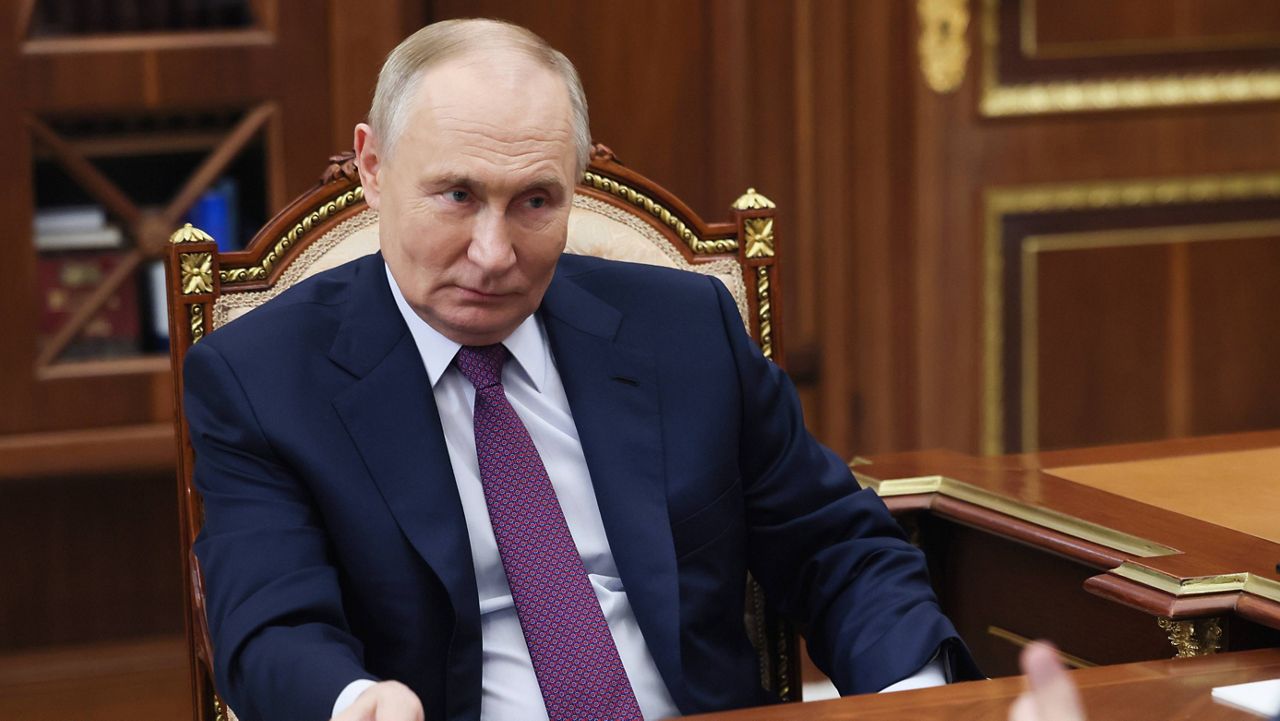MOSCOW -- President Vladimir Putin on Tuesday formally lowered the threshold for Russia's use of its nuclear weapons, a move that follows U.S. President Joe Biden's decision to let Ukraine strike targets inside Russian territory with American-supplied longer-range missiles.
What You Need To Know
- President Vladimir Putin formally lowered the threshold for Russia's use of nuclear weapons, following U.S. President Joe Biden's decision to let Ukraine strike targets inside Russian territory with American-supplied longer-range missiles
- The new doctrine allows for a potential nuclear response by Moscow even to a conventional attack on Russia by any nation that is supported by a nuclear power
- Russia says Ukraine fired six U.S.-made ATACMS missiles Tuesday at a military facility in Russia's Bryansk region, adding its defenses shot down five and damaged the sixth
- While the doctrine envisions a possible nuclear response by Russia to such a conventional strike, it is formulated broadly to avoid a firm commitment to use nuclear weapons and keep Putin's options open
The new doctrine allows for a potential nuclear response by Moscow even to a conventional attack on Russia by any nation that is supported by a nuclear power.
Russia's Defense Ministry said Ukraine fired six U.S.-made ATACMS missiles early Tuesday at a military facility in Russia's Bryansk region that borders Ukraine, adding that air defenses shot down five of them and damaged one more. Ukraine's military claimed the strike hit a Russian ammunition depot.
While the doctrine envisions a possible nuclear response by Russia to such a conventional strike, it is formulated broadly to avoid a firm commitment to use nuclear weapons and keep Putin's options open.
Russian Foreign Minister Sergey Lavrov emphasized that the Ukrainian strike in Bryansk marked an escalation and urged the U.S. and other Western allies to study the modernized nuclear doctrine.
"If the long-range missiles are used from the territory of Ukraine against the Russian territory, it will mean that they are controlled by American military experts and we will view that as a qualitatively new phase of the Western war against Russia and respond accordingly," Lavrov said on the sidelines of the G20 meeting in Brazil without elaborating.
The approval of the document demonstrates Putin's readiness to tap his nuclear arsenal to force the West to back down as Moscow presses a slow-moving offensive in Ukraine as the war reached its 1,000th day.
Asked Tuesday if a Ukrainian attack with longer-range U.S. missiles could potentially trigger a nuclear response, Kremlin spokesman Dmitry Peskov answered affirmatively, pointing to the doctrine's provision that holds the door open for it after a conventional strike that raises critical threats for the "sovereignty and territorial integrity: of Russia and its ally, Belarus.
Commenting on whether the updated doctrine was deliberately issued to follow Biden's decision, Peskov said the document was published "in a timely manner" and that Putin instructed the government to update it earlier this year so that it is "in line with the current situation."
Putin first announced changes in the nuclear doctrine in September, when he chaired a meeting discussing the proposed revisions. He has previously warned the U.S. and other NATO allies that allowing Ukraine to use Western-supplied longer-range weapons to hit Russian territory would mean that Russia and NATO are at war.
Washington has permitted Ukraine to use the longer-range weapons on targets inside Russia after declaring that thousands of North Korean troops were deployed in the Russian region of Kursk to fight an incursion by Kyiv's forces.
"I'm unfortunately not surprised by the comments the Kremlin has made around the publication of this new, revised document," said U.S. State Department spokesman Matthew Miller, adding that since the war began, Russia has sought to "coerce and intimidate both Ukraine and other countries around the world through irresponsible nuclear rhetoric and behavior."



